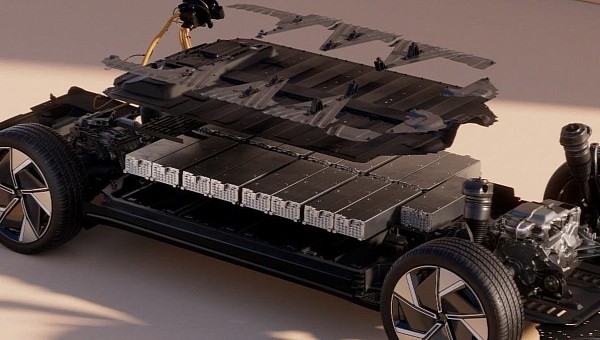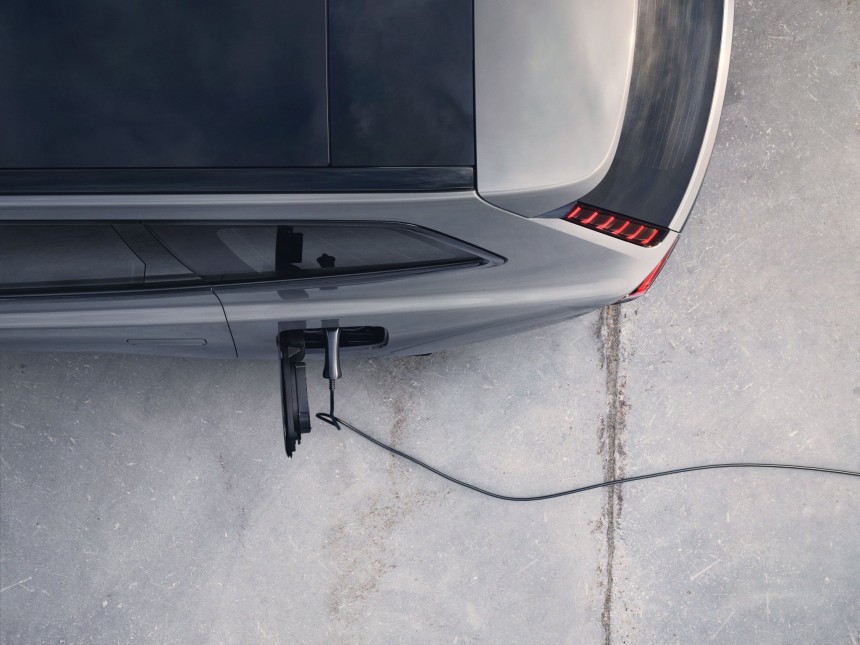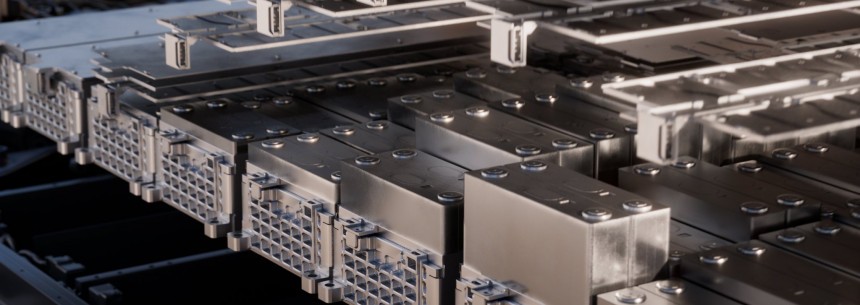The Volvo EX90 impresses with its advanced safety tech and data-crunching capabilities, but let’s not forget it is a car, after all. Its electric powertrain has been developed to offer efficiency, power, and thrills behind the wheel, even if Volvo is eyeing autonomous driving.
The Volvo EX90 was presented as a computer on wheels, but little talk was done about what makes the wheels spin. At least at launch, the new electric flagship will only be available as an all-wheel-drive SUV, with two electric motors energizing the front and rear axles, respectively. Hopefully, Volvo will offer a rear-wheel drive version later to honor Volvo Car USA CEO Anders Gustafsson’s claims that the EX90 will be a “volume car.”
Two versions will be available at the sales’ start, with the base Twin Motor developing 300 kW (402 hp/408 ps) and the Twin Motor Performance upping the stakes to 380 kW (510 hp/517 ps). In both cases, the front motors, which Volvo calls Electric Front Axle Drive (EFAD), are identical, delivering 180 kW/238 horsepower. The Electric Rear Axle Drive (ERAD) is different, with 120 kW/158 hp/163 ps in the base version and 200 kW/264 hp/272 ps in the Performance variant.
Both motors are three-phase Permanent Magnet Synchronous Machines (PMSM), and the ERAD also combines a torque vectoring/declutch unit. This enables the Volvo EX90 to decouple the rear e-motor from the drive when coasting to minimize energy consumption. In the EX90 Twin Motor, the front motor works alone to start from a standstill under moderate acceleration. However, if more throttle is applied, both motors engage for brisk acceleration.
Speaking of acceleration, it’s good to know that the Volvo EX90 will be no slouch. Even in the comfort-oriented Twin Motor version, the electric SUV can go from zero to 100 kph in 5.9 seconds, with 0-60 mph in 5.7 seconds. The Performance variant slashes that to 4.9 seconds and 4.7 seconds, respectively. As with all other Volvo models, the top speed is limited to 180 kph (112 mph) for safety reasons.
The EX90 was designed for One Pedal Drive, using the regenerative braking system to slow the car. This allows the cycling of the kinetic energy back into electricity, which is used to recharge the battery. Volvo went a step further and combined the regenerative and hydraulic braking systems, all while using One Pedal Drive. The car manages the two systems seamlessly.
Powering all that is a 111-kWh CATL battery with a 107-kWh usable capacity. Volvo doesn’t offer details about its chemistry but says the battery packs are arranged in 17 modules on the vehicle’s floor. The battery assembly also contains the battery cooling and heating to optimize the charging and discharging cycles. Volvo EX90 offers pre-conditioning of the battery, controllable via the Volvo Cars app. This gradually warms or cools the battery pack depending on the ambient temperature while it is connected to the grid.
Volvo expects the EX90 to travel as much as 600 km (372 miles) on a charge for the Twin Motor trim. The Performance version cuts that to 590 km/366 miles, according to the European WLTP cycle. Although an EPA certification was not yet acquired, the Swedish carmaker expects to be in the range of 300 miles (482 km). For comparison, the Mercedes-Benz EQS SUV has an EPA range of 305 miles (490 km), while the Tesla Model X has an EPA range of 348 miles (560 km).
The maximum power that the EX90 can draw from a fast DC charger is 250 kW, enough to allow it to recharge from 10% to 80% in less than 30 minutes in optimal conditions. In practical terms, the driver can add 112 miles (180 km) of range in 10 minutes of charging. The battery is automatically pre-conditioned for fast charging performance when a charging station is set in the car’s navigation system.
Two versions will be available at the sales’ start, with the base Twin Motor developing 300 kW (402 hp/408 ps) and the Twin Motor Performance upping the stakes to 380 kW (510 hp/517 ps). In both cases, the front motors, which Volvo calls Electric Front Axle Drive (EFAD), are identical, delivering 180 kW/238 horsepower. The Electric Rear Axle Drive (ERAD) is different, with 120 kW/158 hp/163 ps in the base version and 200 kW/264 hp/272 ps in the Performance variant.
Both motors are three-phase Permanent Magnet Synchronous Machines (PMSM), and the ERAD also combines a torque vectoring/declutch unit. This enables the Volvo EX90 to decouple the rear e-motor from the drive when coasting to minimize energy consumption. In the EX90 Twin Motor, the front motor works alone to start from a standstill under moderate acceleration. However, if more throttle is applied, both motors engage for brisk acceleration.
The EX90 was designed for One Pedal Drive, using the regenerative braking system to slow the car. This allows the cycling of the kinetic energy back into electricity, which is used to recharge the battery. Volvo went a step further and combined the regenerative and hydraulic braking systems, all while using One Pedal Drive. The car manages the two systems seamlessly.
Powering all that is a 111-kWh CATL battery with a 107-kWh usable capacity. Volvo doesn’t offer details about its chemistry but says the battery packs are arranged in 17 modules on the vehicle’s floor. The battery assembly also contains the battery cooling and heating to optimize the charging and discharging cycles. Volvo EX90 offers pre-conditioning of the battery, controllable via the Volvo Cars app. This gradually warms or cools the battery pack depending on the ambient temperature while it is connected to the grid.
The maximum power that the EX90 can draw from a fast DC charger is 250 kW, enough to allow it to recharge from 10% to 80% in less than 30 minutes in optimal conditions. In practical terms, the driver can add 112 miles (180 km) of range in 10 minutes of charging. The battery is automatically pre-conditioned for fast charging performance when a charging station is set in the car’s navigation system.






